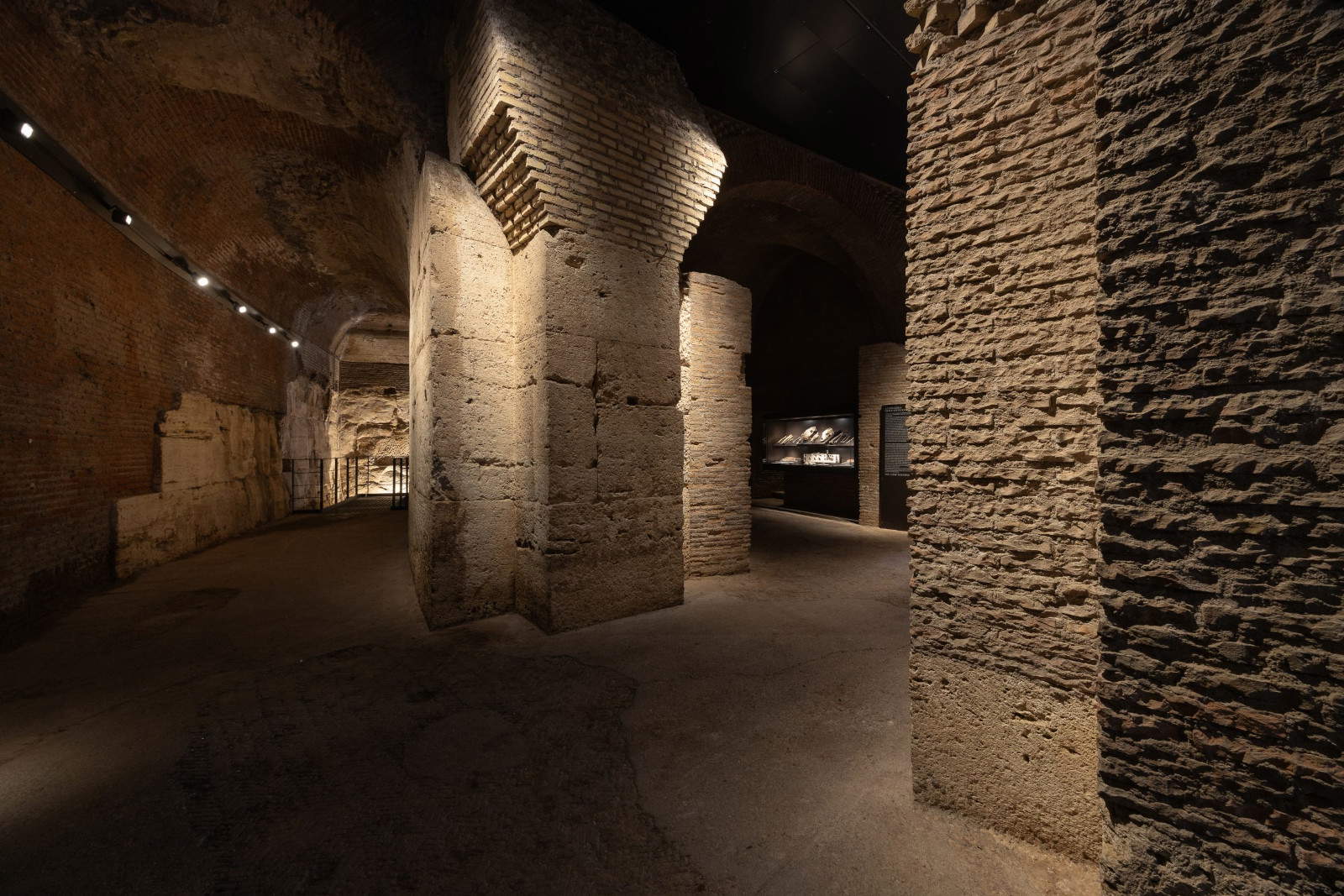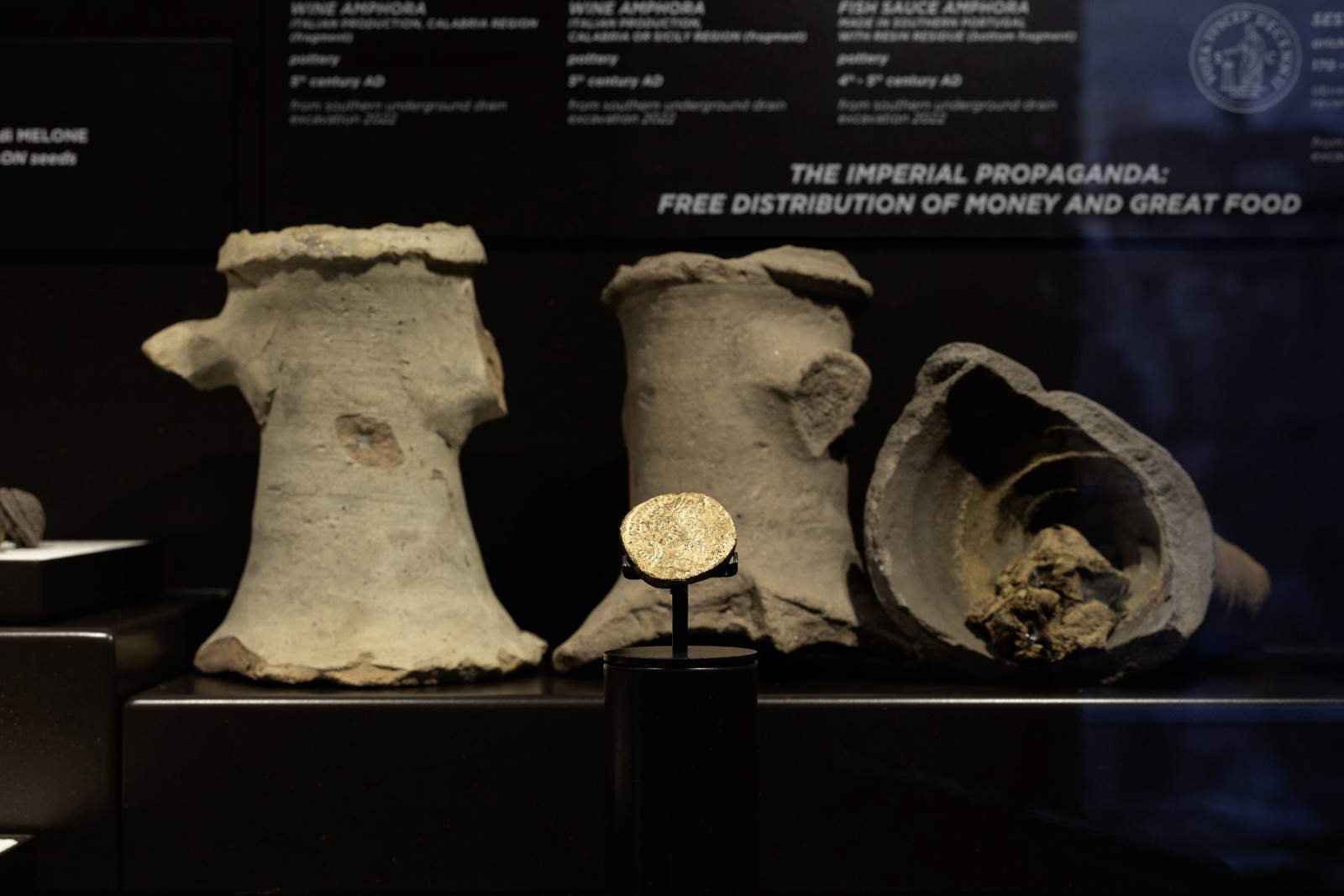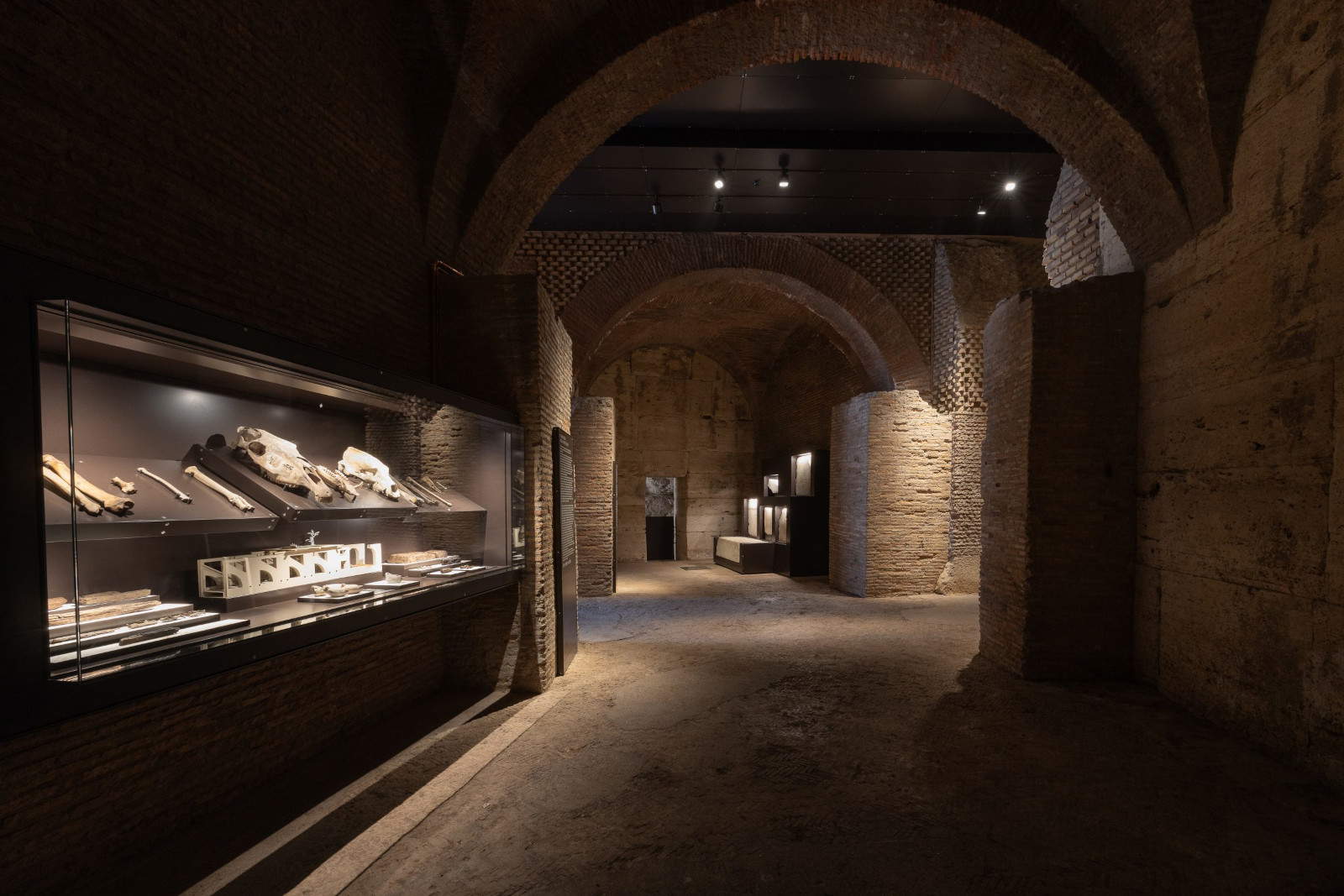The Colosseum Archaeological Park has opened a new museum section inside the hypogea of the Flavian Amphitheater, thus completing the overall museographic project of the Colosseum’s undergrounds, curated by Alfonsina Russo, Federica Rinaldi and Barbara Nazzaro.
After the opening in 2023 of the permanent exhibition in the eastern part of the underground, focusing on the protagonists of the spectacles - the gladiators - with a holographic projection enhancing the cryptoporticus connected to the Ludus Magnus (the training gymnasium), as well as mosaics, stone artifacts and gladiatorial-themed oil lamps, the focus now shifts to the public: more than 50.000 spectators who, seated on the steps of the cavea, spent entire days watching the spectacles offered by the emperor.
This new section is part of a broader plan for the overall refurbishment of the Colosseum, aimed at creating a museum spread along the monument’s tour itinerary. Contents and themes are distributed according to the provenance of the artifacts and their connection to the original context. The new layout thus aims to dislocate points of historical and cultural insight along the route, also contributing to a more balanced management of the tourist flow. With this in mind, the museum located on the second order will also undergo a design reworking between 2025 and 2026: the historical narrative of the Colosseum will be rethought to strengthen the dialogue between the monument, its architecture and the materials belonging to it, traversing the various eras of use and reuse.
The hypogea have been set up with the intention of deepening the operation of the spectacle and the spectators’ lived experience during the day.
In the western sector of the undergrounds, at the end of the usual guided tour, archaeological finds that emerged during investigations that began in 2022 under the direction of the PArCo are on display for the first time. In addition to the hydraulic system underneath the square (both ancient and modern), the researches involved the excavation of the underground hydraulic collector in the southern part of the Colosseum, freeing about 70 meters of stratigraphy. Numerous objects, accumulated as discards - animal and plant remains, amphorae, oil lamps, coins, objects of daily use - were found inside, testifying to a period when maintenance activities were beginning to decline, in the final stages of the Amphitheater’s life.

This new exhibition itinerary, under the scientific curatorship of Federica Rinaldi, Alessandra Celant and Claudia Minniti, opens with an introductory video that recounts the main stages of the archaeological research and specialized studies carried out between 2022 and today.
To recreate the atmosphere of those days, Studio Tortelli e Frassoni of Brescia designed an installation that takes visitors on a journey to discover the habits of the spectators as they waited for the performances to begin.
A reconstructed portion of the cavea, with graffitied steps depicting highlights of the games, has been set up as a tiered display, highlighting the different social classes of the audience. In a lower position, thus closer to the arena, a complete step was placed with graffitied the name of a possible senator of the period (datable between the fourth and fifth centuries AD).
From dawn to dusk, the public spent their time between practices for body care, games of chance, betting and curses directed against rivals. Objects lost and then abandoned as garbage offer a glimpse of daily habits, telling a story of an everyday life: pins, combs, needles, spools, toothpicks, but also dice, pawns, small late-imperial coins and leaden tablets used for curses. Of particular note are two finds: a leaden laminette belonging to the genre of defixiones (curses directed against enemies, love rivals, thieves, athletes), datable to the third-fourth century CE, depicting a shield and a dry tree between lightning bolts; and a precious gold ring with a tiny architectural structure consisting of several tiers decorated with spheres, inside which a movable ball tinkles with the movement of the ring.
Arena performances were also an important moment of propaganda: the emperor rallied the people and strengthened consensus through what the poet Juvenal called “panem et circenses.” This was embodied not only in the display of exotic animals-such as ostriches, lions, and leopards-but also in the distribution of food and wine, symbols of imperial generosity. Oysters, tellins, sea bream seasoned with rare spices, exotic fruits and delicacies were consumed directly on the steps of the cavea. Among the artifacts found in the sewers was a coin made of orichalc alloy (similar to gold), issued by Marcus Aurelius to celebrate the tenth anniversary of his reign.
Finally, the Colosseum was an extraordinary stage machine: the elevators that carried animals and protagonists of the spectacle onto the arena, the complex wooden structures-perfectly preserved thanks to the moisture in the collector-used in the carpentry, restored by the Central Institute for Restoration, complete the display.
From an exhibition point of view, the project enhances the materials with an engaging and informative graphic apparatus: graffiti has been reproduced for clearer reading, bones relocated thanks to reproductions of the skeletons, and the various wooden essences - chestnut, silver fir, elm and others - are illustrated alongside the drawing of the tree and its leaves.

“The importance of renewing displays and updating them in continuity with specialized research and studies is a priority mission for every museum institution. Preservation, research and enhancement, the three pillars of every museum that never wants to stop rethinking itself, make it possible to always offer new perspectives, inviting the public to increase their knowledge and ultimately to return to see it, maintaining a direct thread with the institution,” said Alfonsina Russo, Director of the Colosseum Archaeological Park. “In this direction, therefore, goes the new layout of the hypogea, opened to the public in 2021, enhanced in 2022 with a first temporary exhibition, which then became permanent in 2023; today the new section completes this first redevelopment path, according to the logic of displaying the finds in their context of origin. An exhibition choice that innovates the existing one and moves in step with the research and discoveries that continue to make the Colosseum alive.”
The research and study work has been carried out thanks to the collaboration with Sapienza University of Rome, in particular with the Department of Sciences of Antiquity, the Department of Environmental Biology and the “Charles Darwin” Department of Biology and Biotechnology, with which the Colosseum Archaeological Park has signed two memoranda of understanding; also fundamental have been the existing research and enhancement agreements with the Central Institute for Restoration. Thanks to these agreements and the many professionals inside and outside the PArCo, a scientific edition of the research is being prepared and will be available in the fall.

 |
| Who were the spectators and what did they do at the Colosseum? A new museum section opened in the hypogea |
Warning: the translation into English of the original Italian article was created using automatic tools. We undertake to review all articles, but we do not guarantee the total absence of inaccuracies in the translation due to the program. You can find the original by clicking on the ITA button. If you find any mistake,please contact us.